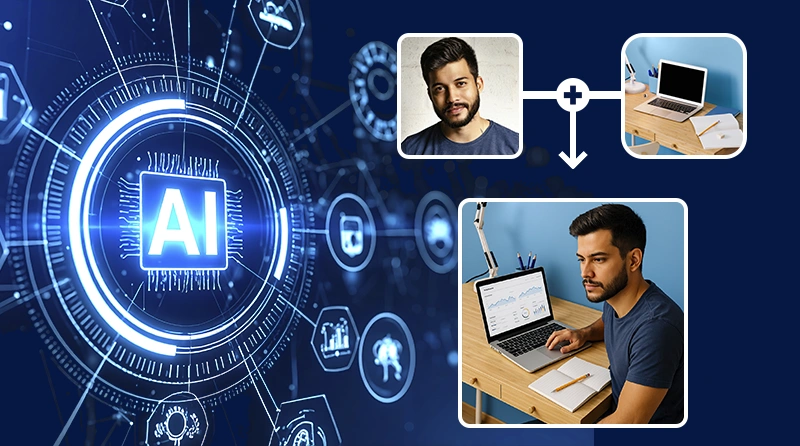Top 10 Generative AI Development Companies of 2025

Artificial intelligence has become a significant economic force, reshaping industries on an unprecedented scale. And generative AI has emerged as the most transformative technology of our time. Driving this wave of innovation are generative AI development companies, offering custom AI solutions and proprietary models that are not only redefining how businesses automate workflows or produce content but also opening doors to fresh monetization opportunities.
65% of U.S. enterprises now deploy generative AI in at least one business unit—nearly double last year’s share. Moreover, McKinsey reported that early adopters who treat generative AI as a profit lever add 2-7 percentage points to EBIT in the first 12 months.
But there’s a flip side. Rolling out generative AI often stalls long before launch. Gartner found that while 17%–25% of companies plan to deploy AI each year, only 2%–5% get models into production. That gap usually comes down to picking the wrong development partner, underestimating integration work, or both.
The ten companies below excel at closing that gap. This guide curates a list of the ten best generative AI development companies that ship gen-AI projects on schedule, under budget, and with measurable upside.
However, if you are evaluating potential partners, a brief overview of generative AI will provide the context needed to understand their capabilities.
What is Generative AI?
Imagine a tool that studies everything your company has already written or recorded—then spins out fresh support replies, tidy code snippets, on-brand voice-overs, or ad-ready images in seconds. That’s generative AI.
In technical parlance, generative AI is a class of machine-learning systems that produce original content after studying large training sets. Traditional AI labels or predicts. Generative models create.
How Businesses Benefit From Generative AI
- Feed it thousands of help-desk chats, and it can write fresh, on-brand replies in seconds.
- Show it your codebase, and it suggests clean snippets that compile.
- Provide it with a product brief, and it sketches images ready for tomorrow’s campaign.
- Automate routine tasks by drafting emails or reports in just minutes.
In short, Gen-AI models learn patterns from your data. Then these create text, pictures, audio, or code that feels tailor-made for you. In every case, the model taps into its learnings to synthesize brand-new, context-aware output that often reads (or looks) human.
Wherever content is produced at scale, generative AI reduces cycle time and cost while maintaining consistency. Marketing teams can generate campaign copy tailored to each audience segment. Customer support centers can deploy chatbots that handle complex queries with a near-human tone, freeing human agents for escalations. For a CTO, it means crossing tedious jobs off the list and tailoring user experiences at scale.
-
$25-$49/hr
-
2013
-
USA
-
250+
Generative AI Development Services
-
< $25 / hr
-
2008
-
USA
-
50 - 249
Generative AI Development services
List of Best Generative AI Development Companies (June 2025 Ranking)
To identify the ten generative AI partners that genuinely stand out in 2025, we dug into hard evidence, including live deployments, client results, and the depth of technical know-how.
Here’s an overview of the leading Gen-AI companies as of June 2025:
| Company | Founded | Rating | Core Competencies |
|---|---|---|---|
| The NineHertz | 2013 | 4.8/ 5 | Custom mobile & web development, full-stack AI integration (predictive analytics, computer vision), AR/VR, retrieval-augmented generation, agentic AI, secure MLOps |
| Prismetric | 2008 | 4.8/ 5 | Generative AI app development, RAG-as-a-Service, Mistral/Llama 2 integration, ISO-driven mobile solutions, no-code AI-agent platform |
| Systango | 2007 | 4.8/ 5 | Google Cloud Gen-AI specialist, custom GPT-4/Llama 2 builds, document-AI & DeFi trading bots, SOC 2/GDPR compliance |
| TechAhead | 2009 | 4.9/ 5 | Generative AI for mobile/web, custom LLM integration, 3-D AR sales tools, health-tech AI apps |
| InData Labs | 2014 | 4.9/ 5 | Data science consulting, custom LLM/NLP & computer vision models, predictive analytics, AWS Advanced Consulting Partner |
| Itransition | 1998 | 4.9/ 5 | End-to-end AI software development, automation & analytics, enterprise LLM/RAG integration, large-scale digital transformation |
| eSparkBiz | 2010 | 4.9/ 5 | 360° Generative AI consulting & integration, AI-agent builds, CMMI Level 3 & ISO 9001 processes, cost-effective full-cycle development |
| Miquido | 2011 | 4.9/ 5 | Google-certified, AI Kickstarter fast-track (2-day demo → 4-week product), LLM & computer-vision solutions, data-driven delivery |
| Accubits | 2012 | 4.4/ 5 | On-premise fine-tuning, pre-built and custom AI models, blockchain + AI solutions, vertical tools for e-commerce & banking |
| Geniusee | 2017 | 5.0/ 5 | End-to-end generative AI (GPT-4, Llama 2, Stable Diffusion, Claude), AI consulting & staff augmentation, fintech & edtech focus |
Top 10 Generative AI Development Companies
1. The NineHertz
1. The NineHertz
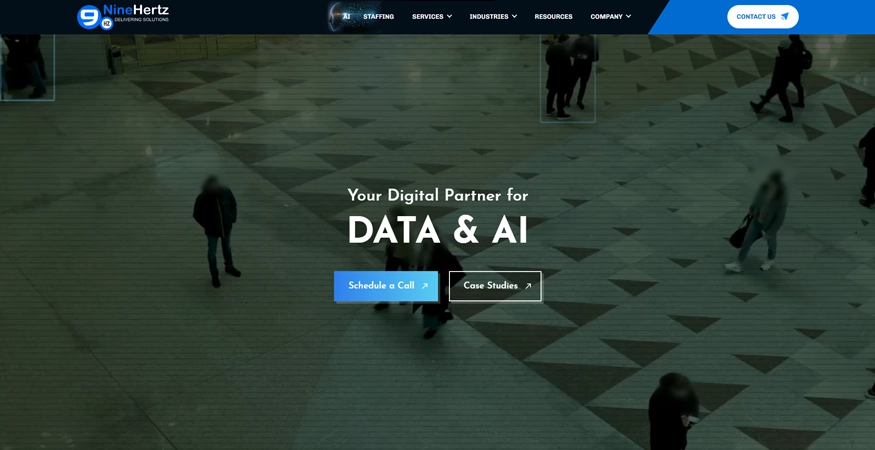
- Location: Jaipur, India (HQ) | USA, UK, Australia, UAE, Canada, Israel
- Employee Size: 350+
- Average Hourly Rate: $50-$99
- Projects Completed: 1300+
The NineHertz helps startups, mid-market, and enterprise firms turn artificial intelligence ideas into production software. Its service catalog covers:
- Generative AI consulting and delivery—advice on areas where large-language models (LLMs) such as GPT-4 or DALL-E add value, followed by build-out and testing.
- Agentic-AI solutions—autonomous “agents” capable of initiating multi-step workflows (for example, creating a support ticket and drafting the first reply)
- Secure deployments on Microsoft Azure—the team provisions cloud resources, applies encryption, and documents settings so internal security staff can audit the system.
This organization helps businesses across sectors such as e-commerce, healthcare, and real estate to automate business processes without rebuilding existing systems. For a leading online retailer, the team rolled out three AI modules in the same cloud tenant. It had a recommendation engine that raised the average order value by 30%, predictive inventory analytics that cut holding costs by 20%, and a GAN-based fraud screen that spots suspicious checkouts before they clear.
Clients appreciate their efforts towards tailoring solutions for individual needs; one review notes, “We were impressed with their ability to come up with great solutions whenever we encountered problems.”
2. Prismetric
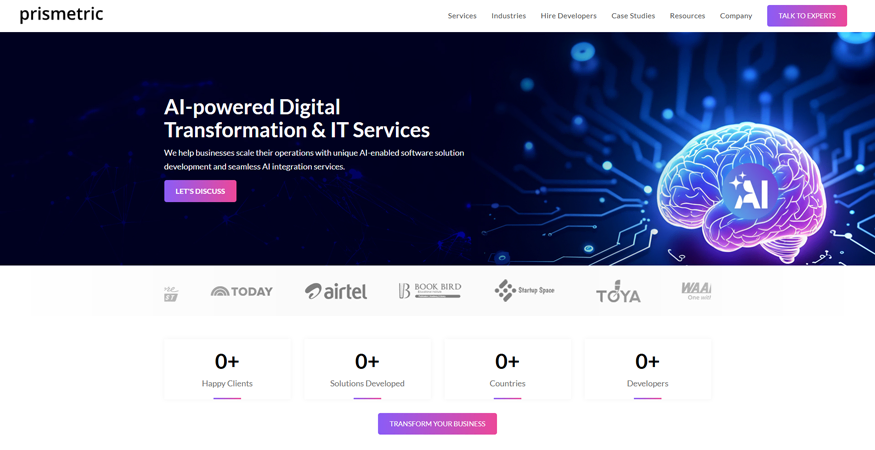
- Location: Gandhinagar, India (HQ) | USA, Australia, Germany
- Employee Size: 100+
- Average Hourly Rate: <$25
- Projects Completed: 1,000+
Prismetric’s ISO 9001:2015 processes keep costs low and quality steady. Its public RAG-as-a-Service page details how the team links open-source models such as Mistral and Llama 2 to live knowledge bases, preventing hallucinations in chat or search. The company recently launched a self-serve platform that lets non-technical teams build, train, and deploy custom AI agents—no code required. Logos on their roster include big names like Vodafone Idea and Qatar Airways, a testament to their reliability.
3. Systango
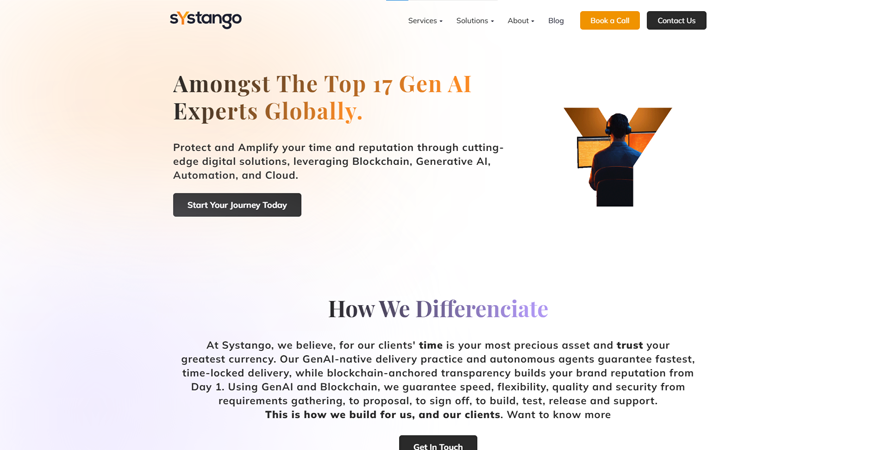
- Location: London, UK (HQ) | USA, India
- Employee Size: 350+
- Average Hourly Rate: $25-$49
- Projects Completed: 1,000+
Systango, a publicly listed firm and a Google Cloud Partner, trains and deploys models for practical business operations. For legal-tech firms, it built a document reader that processes legal contracts, saving 80% of the time taken to do the tasks manually. It delivers insights 5x faster while maintaining SOC 2, GDPR, and HIPAA compliance. Businesses pick Systango when they want fast work, certified AI expertise, strong security, and a partner whose codes scale without surprises.
4. TechAhead
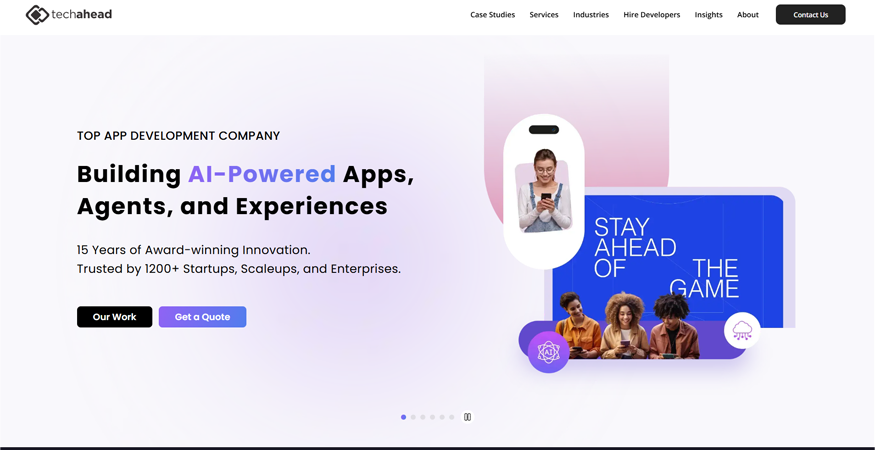
- Location: Noida, India (HQ) | Agoura Hills, USA
- Employee Size: 250+
- Average Hourly Rate: $25–$49
- Projects Completed: 2,500+
TechAhead specializes in wiring custom LLMs into iOS, Android, and cloud back-ends, turning raw data into real-time recommendations and multilingual chat. They developed a sales app for Audi that displayed cars on an iPad in 3D and lifted dealership conversions by 15%. They developed a mobile app that produces AI-generated diet and workout plans, showing TechAhead can turn LLMs into engaging consumer health tools. A Clutch reviewer writes, “TechAhead is incredibly thoughtful and dedicated to whatever project they work on.”
5. InData Labs
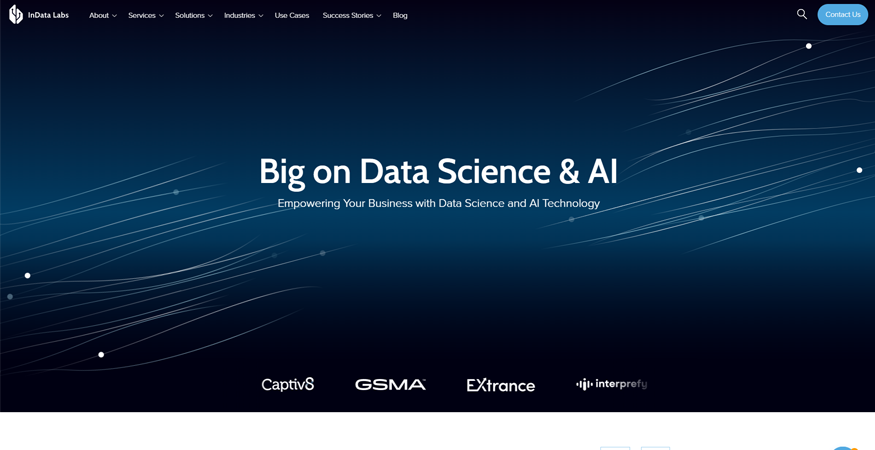
- Location: Nicosia, Cyprus (HQ) | Lithuania, USA
- Employee Size: 80+
- Average Hourly Rate: $50–$99
- Projects Completed: 155+
InData Labs is an AWS Advanced Consulting Partner that builds custom language and vision models. Their offering of deep data science, cloud-native ops, and clear communication makes InData Labs a safe pick for businesses struggling with complex data problems. Its neural-network upgrade for Flo Health improved cycle-prediction accuracy by 54%. A happy client on Clutch states that they, “… were knowledgeable when we didn’t have a good idea of how best to proceed.”
6. Itransition
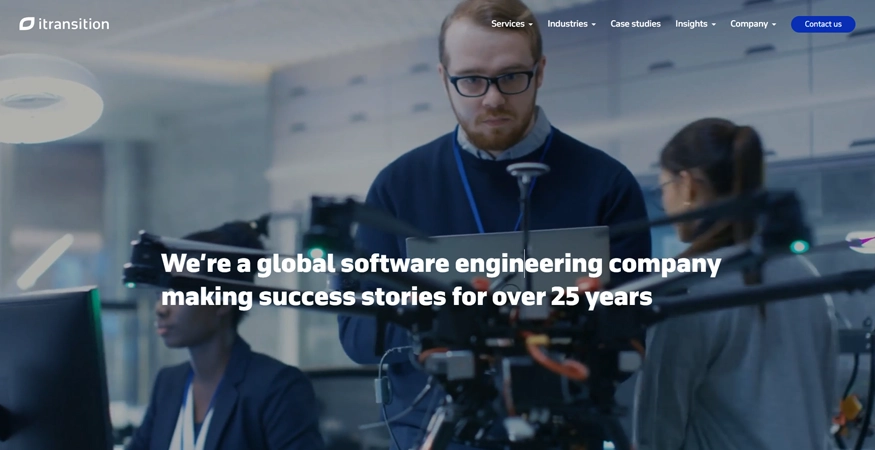
- Location: Lakewood, USA (HQ) | England, Poland, Portugal, Lithuania, Georgia, UAE, Mexico, Germany, Uzbekistan, Bangladesh
- Employee Size: 3,000+
- Average Hourly Rate: $25–$49
- Projects Completed: 1,600+
Itransition has grown from a conventional software vendor into a global partner for enterprise-grade AI. Clients appreciate the Itransition team’s disciplined project management, extensive technical skills, and transparent pricing. The company added computer-vision tagging to an e-commerce site so viewers can click items inside videos. The client reports an 8% jump in visitor-to-buyer conversions. Services cover the full lifecycle—from strategic consulting and custom LLM development to integration of RAG knowledge bases, intelligent automation platforms, and advanced analytics.
7. eSparkBiz
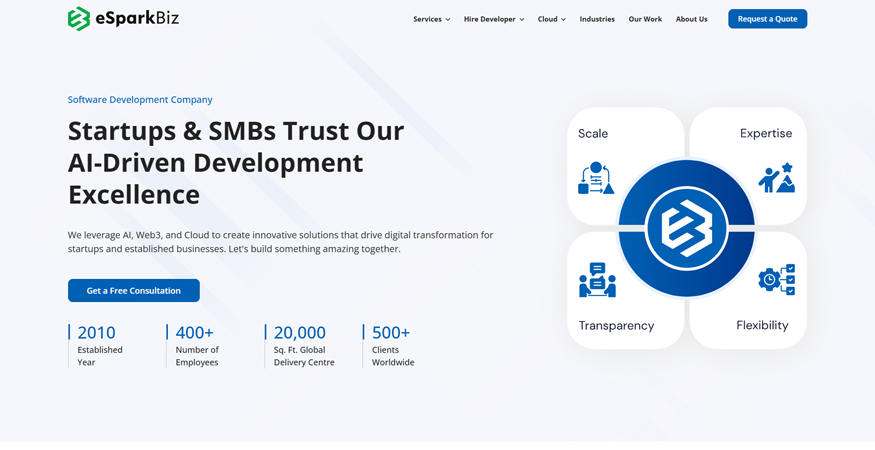
- Location: Ahmedabad, India (HQ) | USA
- Employees: 400+
- Average hourly rate: <$25
- Projects delivered: 297+
eSparkBiz follows documented, audited processes carried out under CMMI Level 3 and ISO 9001 quality-management standards. Showcasing its capacity to apply generative AI for critical business tasks like security monitoring and response, the company created an AI-powered platform that monitors traffic to detect and defend against digital threats in real time. Highlighting the team’s structured approach, on Clutch, one reviewer says, “They approached the project with seriousness and delivered high-quality results without unnecessary delays.”
8. Miquido
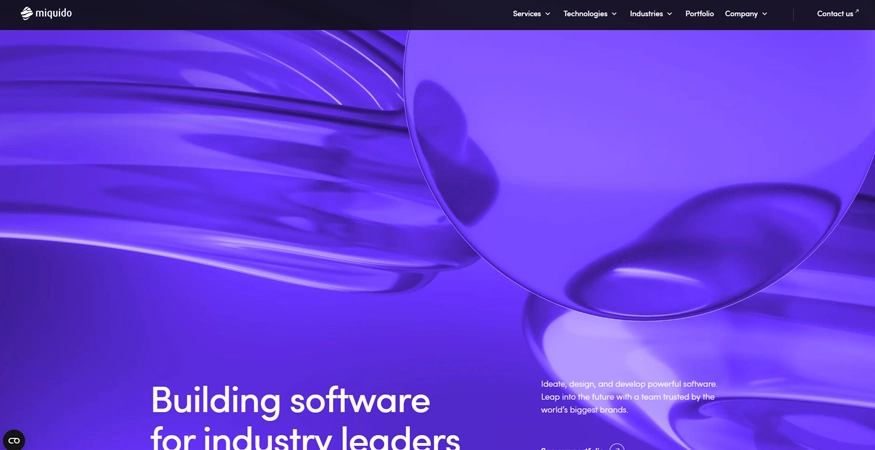
- Location: Kraków, Poland (HQ) | UK
- Employees: 200+
- Average hourly rate: $50–$99
- Projects delivered: 250+
Miquido is a Google-certified software developer that offers an AI Kickstarter framework—a method designed to produce a working generative AI demo within two days and a full product in roughly four weeks. A case study details its AI-powered credit-scoring system. The engine runs in seven banks, has processed more than 500 million loan applications, and achieves 97% prediction accuracy. Companies in finance, e-commerce, and media choose Miquido when they need a clear, time-boxed path to production-ready generative AI systems.
9. Accubits
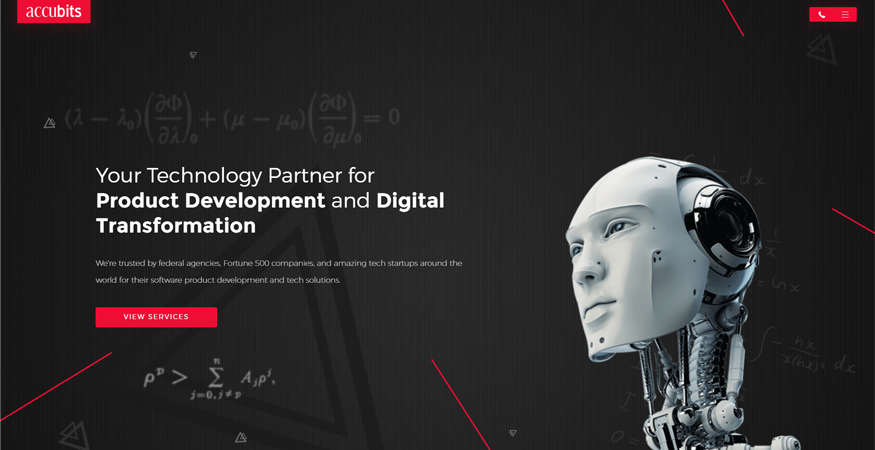
- Location: Vienna, VA, USA | UK, India, UAE, Canada, Australia, Switzerland, Singapore, Indonesia, Hong Kong, Norway
- Employee Size: 501–1,000
- Average Hourly Rate: $25–$49
- Projects Completed: 500+
Accubits Technologies blends generative AI with blockchain to provide solutions for governments and Fortune 1000 firms. From strategy consulting and AI audits to on-premises fine-tuning, their team guides you through every step. They build vertical-specific tools like automated document generators for banks and virtual try-on experiences for retailers. For example, Accubits developed a computer vision system for a major Indonesian bank that cut manual verification in staffing from 12 people per branch to just 2, reducing processing time by 70%.
10. Geniusee
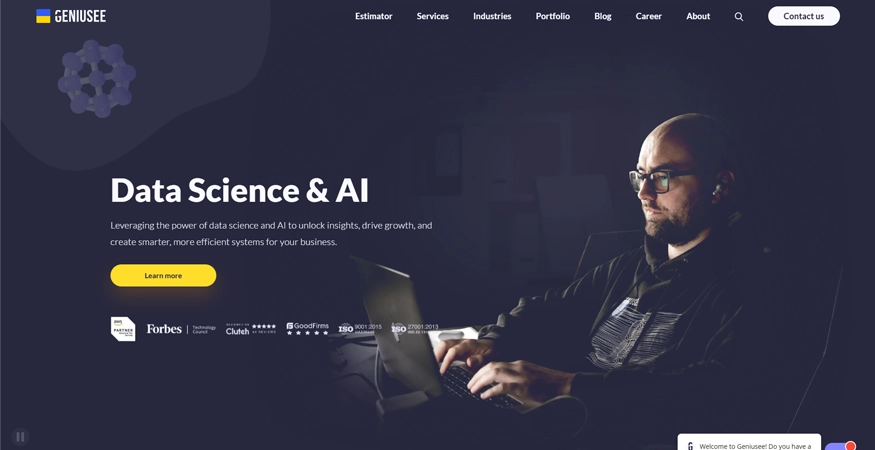
- Location: Kyiv, Ukraine (HQ) | USA, Sweden, Poland
- Employee Size: 50–249
- Average Hourly Rate: $25–$49
- Projects Completed: 180+
Geniusee has a team that handles every step of a generative AI build—from goal-setting workshops and quick prototypes to full rollout and steady model tuning. Therefore, you get the best model for your business goals, not a one-size-fits-all fix. Their chatbots, content generators, and custom AI workflows slot neatly into your existing systems. A Clutch reviewer sums it up: “Geniusee’s commitment to customer satisfaction and flexible project management are very impressive.”
How Did We Come up With Our List of The Top Generative AI Development Companies?
The market is flooded with AI-powered solution providers. What would help a CTO, or any business leader, to figure out which glossy brochure speaks the truth? This is the question we sought to answer with this guide.
We started with one guiding question: Would this company make a CTO feel confident putting production work—and budget—on the line? To find out, we first defined what “world-class” looks like. Then we built a scoring system to measure it.
Listed below are the five non-negotiable criteria a generative AI development company has to meet to be considered credible:
1. Demonstrable expertise
We demanded case studies that show hard metrics—fewer manual steps, lower support costs, and new revenue lines. If a firm could not point to documented gains, it never made the first cut.
2. Industry-specific acumen
Generic, one-size-fits-all language models rarely pay off. We demanded proof of domain depth: experience serving in various sectors such as finance, healthcare, manufacturing, eCommerce, or retail.
The top scorers were those who could fine-tune LLMs or set up Retrieval-Augmented Generation (RAG) systems with a client’s own data so that answers stay current and compliant.
3. Scalable architecture and clean integration
A pilot prototype that dies under real-world load is a technical debt. We vetted the firm’s track record with cloud-native microservice designs on AWS, Azure, or Google Cloud, as well as hands-on skills with TensorFlow, PyTorch, and other machine learning frameworks. Also, proof of seamless integration into existing ERPs and CRMs was non-negotiable.
4. Collaborative delivery
Great AI is built with—not for—the client. Successful AI rollouts feel like working with one blended team and not hiring outside help who are barely interested in your business’s success.
Teams that made it to our list don’t just wait for issues to surface but anticipate roadblocks, flag them early, and propose fixes before the project gets derailed. That forward-looking mindset is exactly what sets a strong development partner apart from one that only reacts after deadlines slip.
We looked for evidence of agile sprints, plain-language status reports, open pricing, and direct access to engineers. We focused on companies whose Clutch reviews highlight “proactive problem-solving” or sprint goals tied to KPIs such as “cut churn 15%.”
5. The Six Criteria We Scored
We outlined the standards, but how to measure those traits in the real world? To turn those ideals into numbers, we weighted six criteria:
- Technical depth—the team’s proven experience in working with leading GPT-4-class generative AI models, Stable Diffusion, Claude, and emerging frameworks.
- Verified client feedback—ratings above 4 stars and recurring praise for delivery quality, transparent communication, sticking to timelines, and business impact.
- Project portfolio—live AI-powered solutions across multiple sectors, each with measurable business results such as hours saved, errors reduced, or profits lifted.
- Pricing clarity & value—fixed-fee pilots or transparent rate cards that align spending with outcomes.
- Global reach & 24/7 support—the ability to work across time zones, languages, and regulatory regimes.
- Innovation pace—evidenced by recent tool rollouts, demonstrating a commitment to continuous upgradation rather than resting on last year’s achievements.
Apart from these metrics, security and GDPR-aligned data flows also carried weight because privacy breaches and bias can sink a deployment.
7. How This Schema Helps You
By mapping every company against these checkpoints, we found developers who can:
- Deliver AI solutions on schedule and under budget.
- Guard sensitive data while staying compliant.
- Scale from pilot to production without re-architecture.
- Translate technology into measurable business wins.
You can use the same yardstick if you choose to run your own vendor search, and you’ll spend less time guessing and more time shipping reliable AI-powered solutions.
How to Choose the Right Generative AI Development Company?
Picking a partner to build AI-powered solutions is a decision that can have a huge impact on your business goals. The following checkpoints blend technical rigor with day-to-day practicality. It will help you identify partners who will treat your success as their own:
1. Start With Your KPI
Pick the outcome that matters to your business growth. You might want to trim support costs by 20%, lift repeat sales by, say, 15%, or halve the model-deployment time. Then use that single, clear-cut target as your compass.
If a vendor can’t explain, in plain language, how their approach directly pushes your chosen metric, they’re not the right fit.
2. Inspect Project Management and Communication
Effective AI work is iterative. Ask each bidder for a sprint plan. Deliverables have to be scheduled at pre-selected intervals. Say every 2–4 weeks. The system should additionally take into account model-performance gates (latency, precision) and data-quality checks (missing values, label drift).
3. Probe Real Technical Depth
Dig into the hard evidence that separates marketing talk from genuine capability:
- Model mastery: Look for live projects built on GPT-4-class language models, Claude, Stable Diffusion, or Gemini—proof they’ve customized complex models, not just called an API.
- Tool stack clarity: Request an architecture diagram that shows:
- where the data comes in (pipelines)
- which AI engine does the heavy lifting (TensorFlow or PyTorch)
- where the finished model will run (AWS, Azure, or Google Cloud)
That map tells you whether their tech choices align with your company’s setup or would force expensive changes later.
- Multi-scale adaptability: Look for proof that they’ve taken a small pilot—maybe a chatbot handling a few hundred queries—and scaled it to millions of requests per day without rebuilding everything from scratch. That track record will indicate that your pilot can grow smoothly instead of stalling when traffic spikes.
- Adversarial defense: Prompt injection, data poisoning, and model theft attacks are real. Experienced teams have guardrails in place—from input sanitization to secured model endpoints.
- Maintenance rhythm: When you first train an AI model, it learns patterns from the data you give it—say last year’s customer-support chats. As your products, customers, and rules change, the model that hasn’t seen this fresh context gives answers that become less accurate or less relevant. A reliable vendor retrains, patches, and upgrades on a defined schedule—and tells you what that cadence will cost upfront.
- Performance-tuning workflow: After an AI system goes live, you don’t just set it and forget it. A professional team keeps three simple safeguards running:
- A/B tests – They run the current model and an updated version side-by-side on real traffic to see which one answers better or faster.
- Drift monitors – Software watches incoming data for signs that customer behavior or language has changed. If the model’s accuracy starts slipping, the monitor raises a flag.
- Rollback triggers – If a new model or data update hurts results, the team can switch back to the previous, stable version in minutes instead of days.
- Credentials that count: Engineers with AWS or GCP machine learning certificates, TensorFlow developer badges, or ISO 27001 credentials have proven, hands-on expertise—not just résumé claims.
3. A Due Diligence Questionnaire
When you’re down to the final two or three contenders while shortlisting vendors, run them through the filters below.
“Do you have a case study in my domain?”
Red flag: Only shares generic use cases with no domain-specific customization or measurable uplift from custom training. It suggests the vendor hasn’t actually fine-tuned models or trained on proprietary data.
“What’s your data-encryption policy and RBAC setup? Are you GDPR/ HIPAA compliant? Provide the certificates.”
Red flag: Vague talk of “best practices.” It’s often a sign they’re underprepared—something that can easily snowball into security gaps, compliance failures, or late deliveries.
“What’s your post-launch monitoring and retraining schedule?”
Red flag: No concrete plan, only vague assurances—“We’ll retrain if needed.” This shows they haven’t thought through model drift, real-world feedback loops (learning from user interactions to improve performance), or long-term maintenance.
“Break down costs for build, tuning, hosting, maintenance, and future upgrades.”
Red flag: Lack of any concrete metric. This usually means they haven’t scoped the work thoroughly, which can lead to surprise costs later.
Conclusion
Generative AI can trim costs, spark new revenue streams, and lift customer satisfaction—all before your company’s next quarterly report. Yet most firms never see that upside.
Most pilots stall. McKinsey found that more than 80% of organizations still report no material impact on earnings from their Gen AI initiatives. Gartner adds that nearly one-third of proofs of concept are abandoned when bills mount, data stays messy, or value shows up too slowly. It’s a gap between hype and real haul, the Gen AI paradox.
So why push through? Because the prize dwarfs the risk. McKinsey estimates that embedding Gen-AI into everyday workflows—like answering support tickets, drafting code, or flagging fraud—could generate around $2.6 trillion to $4.4 trillion in fresh economic value each year. For context, that’s roughly the size of the U.K.’s entire economy.
In other words, it means real gains that lift global business output. For your business, that means more productive teams, faster service, fewer errors, better products, bigger margins, and brand-new revenue streams—the value you’ll see in your P&L.
But how do you turn your trials into wins?
Better tech helps, but a better partner treats your success as their own. They turn tough business problems into repeatable wins with the right mix of AI models, data engineering, and domain-specific expertise.
Now it’s up to you:
- Start with the problem that moves your P&L.
- Match it to a team on our list and run the checklist on potential partners.
- Press for proof—case studies, numbers, live demos.
- Start small, pay for a real pilot, and move on only when you see clear gains.
When a vendor clears those bars, odds shift in your favor, and your Gen AI initiative moves from the expense line to the profit line.
Frequently Asked Questions
Which is the leading generative AI development company currently?
It depends on the scope of your project, but for end-to-end custom work, The NineHertz scores highest on client satisfaction. Likewise, Accubits leads on project volume. Itransition excels at regulated integrations.
How do I integrate generative AI?
Start small. Begin with one business pain point, pick one high-impact workflow, and secure deep access to clean data. Then run a small, 6-week pilot for proof-of-value with a reliable Generative AI development company. Then scale—ideally with a partner that understands your industry and governance needs.
What is the best generative AI platform?
“Best” depends on your business needs:
- Text-heavy apps lean toward OpenAI or Claude.
- Imagery-related tasks require Stable Diffusion.
- A fine-tuned, self-hosted open-source model might work best when data sovereignty is critical.
What is a realistic timeline for a generative AI project?
Project timelines are also highly dependent on scope. A tight pilot that proves a single hypothesis can hit production within a 3-to-6-month timeframe—long enough to train a model, integrate an API, and show a KPI bump. Full-scale programs that need redesigning of multiple workflows or integrations with legacy stacks with extensive training are marathons, not sprints. Plan for 12 months or more for full implementation with change-management cycles.
How much does it cost to build a custom generative AI solution?
Budgets depend on scope. As per industry data, a lean pilot or Minimum Viable Product (MVP)—think one use case, limited data—can start in the range of $25,000 to $50,000. Need an enterprise-grade solution with custom model development, heavy security, and deep systems integration? Prices can range from $100,000 to over $250,000 and beyond.
Always ask a vendor for a line-item quote that covers build, choice of cloud or on-prem hosting, and the care and feeding costs once the project goes live.









